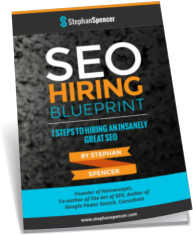If you’ve picked up the buzz and are considering adding RSS feeds to your site, Amanda Watlington has some pointers on how to approach it, which I’ve summarized:
- Add new content to your site
You need to be providing a steady flow of new information to readers who have subscribed to your feed. Without it, your subscribers will lose interest. Areas to update on your website may be news or press releases, and/or careers information. Do not offer RSS feeds until you are able to provide regularly updated content. - Offer multiple feeds
Most websites have multiple audiences. Content that interests reporters will be different to that of interest to job seekers. If you are releasing new products or service updates, consider having a separate feed for each. There is no limit to how many feeds you should offer. Look at it from a marketing standpoint. - Frequency and recency
Consider how often you update your website. This will dictate how often you update your feeds. Since the success of your RSS campaign depends on a regular flow of information, you may want to create a schedule that plans for regular updates. - RSS format for your feeds
What format or version of RSS you will use? Typically, the choices include RSS 1.0 and RSS 2.0. A third choice is Atom, which performs the same basic functions as RSS. Decide if your feed format is to support enclosures such as image and audio files, an important functionality that RSS 2.0 feeds provide. - How much will you syndicate in your feed
Decide how much content you will offer subscribers. Will it be a headline, a teaser, or more? If you are a content provider, you may want to offer headlines only, then readers will come to your site to read the entire article. Remember, however, that partial or headline-only feeds can be annoying to readers who expect to receive the entire article in their RSS reader. Know your audience and clarify your goals before deciding how much content to provide. - Encourage others to syndicate your content onto their site
Expand your readership dramatically by offering a feed syndication tool that enables other site owners to create a customized feed of your headlines on their site. Properly constructed, these feeds will drive traffic to your site and add valuable links for search marketing. - Yes or no to advertising
There are several schools of thought on this one, with arguments both in favor of carrying advertising and for creating feeds that are completely advertising free. You will want to take a stance on this during the planning process. - Measuring success
The three key metrics of circulation, readership and clickthrough rates apply here. Circulation measures the number of subscribers your feed has. Readership measures the number of readers who viewed your feed in their RSS aggregator. Clickthroughs measure the number of readers who click from the feed to your site. Determine how aggressively you want to measure feed performance, set benchmarks and put tools in place to enable you to gather the data you need to measure success. - Advising your audience about RSS
Letting readers know they can easily subscribe to your feeds may be as simple as putting an orange XML or RSS button prominently on your site, or providing extensive explanations and assistance to your readers. A press announcement about the availability of feeds on your site may be an option. - Monitor the rapidly changing RSS landscape
As uses for RSS expand and new tools arrive to make it easier to implement RSS on sites, be sure that someone in your organization is monitoring the landscape regularly to ensure that you are as up to date on this evolving technology as possible.
Great advice, Amanda! Amanda also says: “Just remember that RSS is a marketing solution, not a technical problem. If you approach getting started in RSS from this perspective, you will find RSS an exciting new marketing communications medium.”
You can also download her white paper, “The RSS Advertising Debate: Is It Just Commerce vs. Credibility?” at www.searchingforprofit.com/rssads.html.

 SIGN UP FOR EXCLUSIVE WEEKLY CONTENT
SIGN UP FOR EXCLUSIVE WEEKLY CONTENT 


Leave a Reply